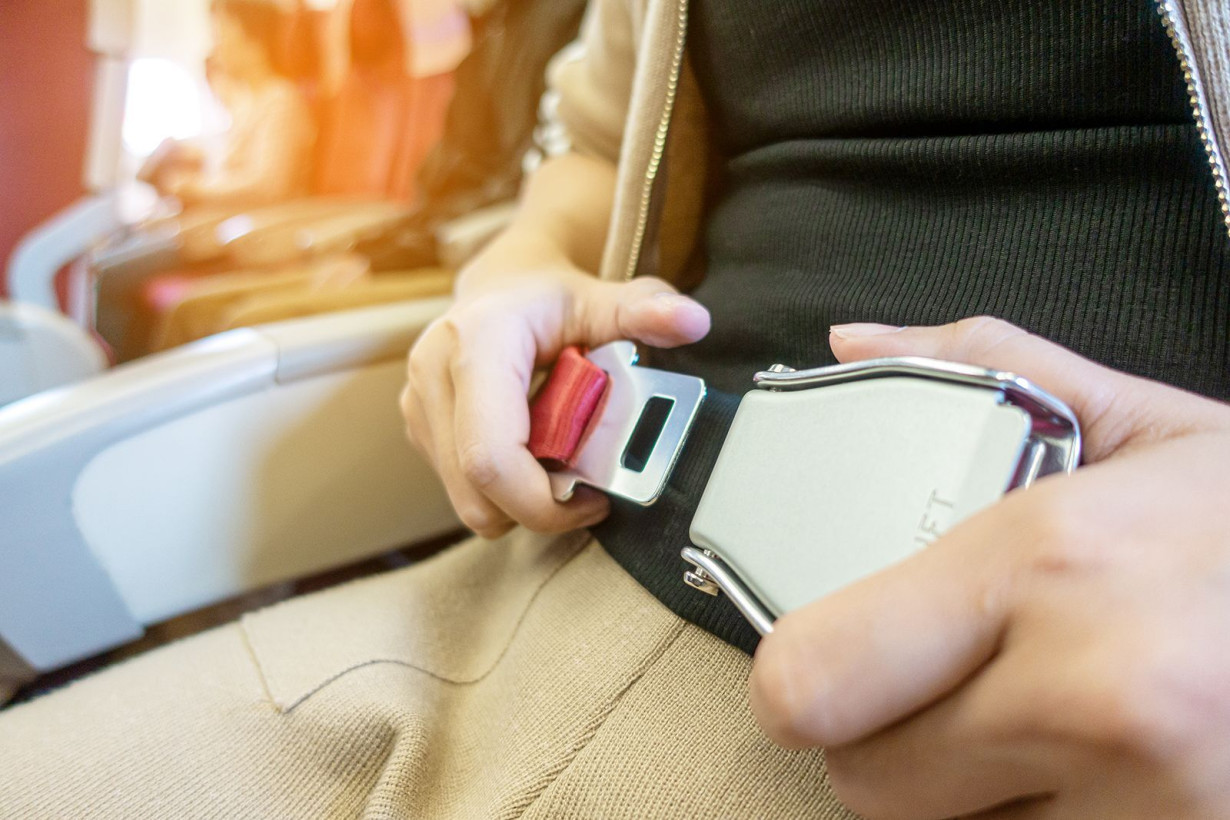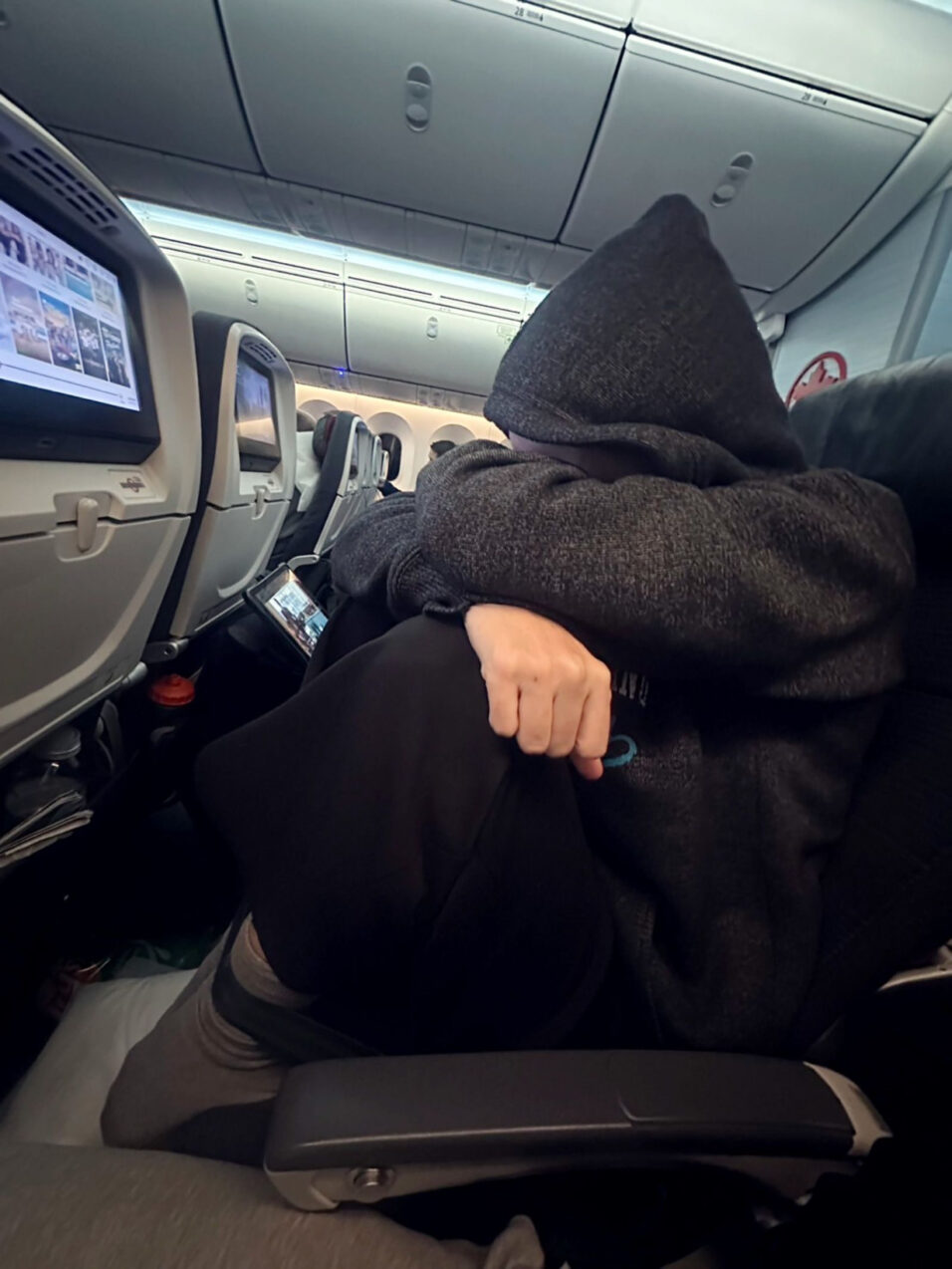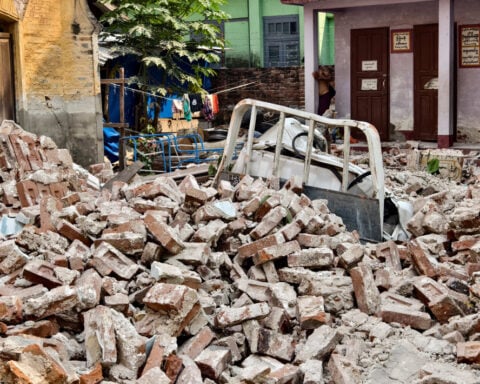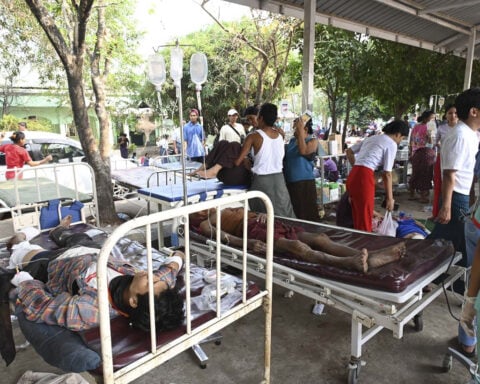(CNN) — For many travelers, sleeping while seated upright is a huge challenge, making long-haul flights an exhausting experience for those in economy-class seats.
Passengers often go to great lengths to get some inflight Zs, whether they’re buying pricey neck pillows and “foot hammocks,” or contorting themselves into awkward positions.
Most of the time these efforts — futile as they may be — are completely harmless. However one so-called flying hack making the rounds on TikTok and Instagram in recent months has experts alarmed.

In the videos, which have racked up millions of views over the last year or so, passengers can be seen pulling their knees up to their chest and placing their feet at the edge of their seats. Then, they secure their seatbelts around their ankles to prevent their feet from slipping off the seat, allowing them to rest their heads on their knees.
Not surprisingly, flight attendants in the US aren’t in favor of passengers attempting this hack. Sara Nelson, president of the Association of Flight Attendants-CWA, which represents 55,000 flight attendants at 20 airlines, did not mince words.
“This is extremely dangerous,” she said in a statement to CNN Travel.
“The seatbelt is designed to sit low and tight across your lap. This is to best protect you in the event of turbulence, an emergency landing or an accident. This is not only for your safety; if you are not properly buckled in you will likely hurt someone else when thrown in turbulence.”
In addition, she says it could land you in trouble with the law.
“Bottom line, this is a violation of federal regulations and instructions from crew members. Stop it,” said Nelson.
“Willful refusal will also make you subject to a fine up to $35,000.”
Reaction to the viral social media videos of travelers demonstrating the seatbelt sleep hack has been mixed.
Some say they will try it out on their next flight, while others claim they aren’t flexible enough or are too tall to even attempt to pull it off. Some have come out in defense of it, saying the airlines have pushed travelers to extreme measures by making economy-class seats too small and uncomfortable.
Plenty of critics have chimed in as well, warning in graphic terms of the injuries that could occur during severe turbulence.
Many also suggest that buckling your seatbelt around your ankles will increase your risk of blood clots.
Reducing the risk of blood clots
We asked Dr. Nathan Connell, a hematologist at the Brigham and Women’s Hospital and associate professor of medicine at Harvard Medical School in Boston, to weigh in on the issue.
“It’s hard to say whether this purported travel hack will specifically lead to blood clots, but I would be careful with anything that restricts blood flow because that may lead to an increased risk of clots,” he said via email.
“If there was turbulence or an emergency, and someone’s legs were wrapped up in the seatbelt like this, it could lead to a leg or ankle injury, which could also cause blood clots as well.”
The American Society of Hematology expert noted millions of people travel per year, but there haven’t been robust studies evaluating all the factors that go into a travel-associated “venous thromboembolism” (blood clot) such as deep vein thrombosis (DVT) or a pulmonary embolism (PE).
“The data we do have suggests that flight lengths over four hours probably lead to some increase in clot risk, but it’s more likely that flights over eight hours are where the actual risk is for most cases,” said Connell.
“Even though the risk does change with these flight lengths, the absolute number of people who develop clots is still small.”
His advice for those who are concerned about their risk? Stay well hydrated, wear loose, comfortable clothing that doesn’t restrict movement or blood flow and if possible get up and move around during the flight.
“I think the most important piece of advice that I give to my patients is that most people, even those with inherited clotting disorders, will never experience a blood clot, but that it’s the combination of various risks together that may contribute to the chance that someone will develop a DVT or PE,” said Connell.
“Flying is incredibly safe and by educating yourself about ways in which to reduce blood clots you can have a wonderful trip.”
And that includes keeping your ankles far away from your seatbelt.
The-CNN-Wire
™ & © 2025 Cable News Network, Inc., a Warner Bros. Discovery Company. All rights reserved.

 Trump has begun another trade war. Here's a timeline of how we got here
Trump has begun another trade war. Here's a timeline of how we got here
 Canada's leader laments lost friendship with US in town that sheltered stranded Americans after 9/11
Canada's leader laments lost friendship with US in town that sheltered stranded Americans after 9/11
 Chinese EV giant BYD's fourth-quarter profit leaps 73%
Chinese EV giant BYD's fourth-quarter profit leaps 73%
 You're an American in another land? Prepare to talk about the why and how of Trump 2.0
You're an American in another land? Prepare to talk about the why and how of Trump 2.0
 Chalk talk: Star power, top teams and No. 5 seeds headline the women's March Madness Sweet 16
Chalk talk: Star power, top teams and No. 5 seeds headline the women's March Madness Sweet 16
 Purdue returns to Sweet 16 with 76-62 win over McNeese in March Madness
Purdue returns to Sweet 16 with 76-62 win over McNeese in March Madness








